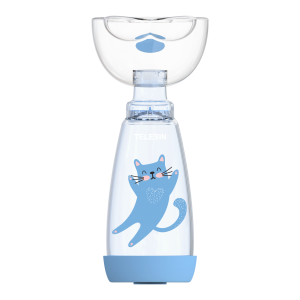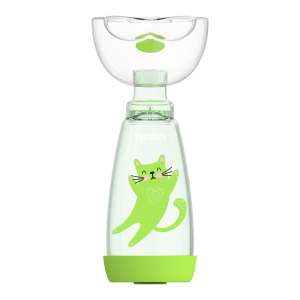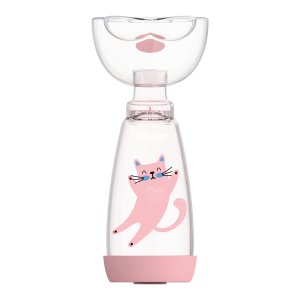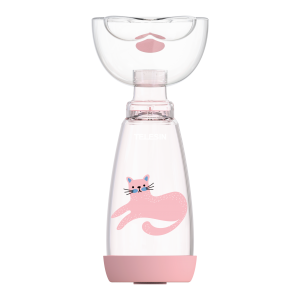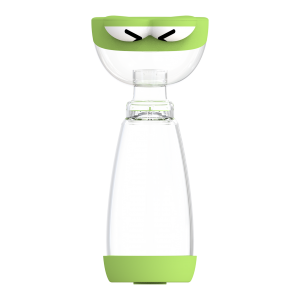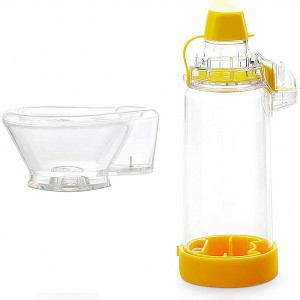
Products
Spacer Chamber Children Adult Medical Equipment TH10020,0040, 0050
What is a spacer?

A spacer is a plastic tube that has a mouthpiece on one end. On the other end, a person can attach their inhaler. The inhaler is a device that delivers puffs of medication into the air so a person can breathe in the medicine.
Using a spacer extends the amount of time it takes for the medicine to enter the lungs. It also gives a person more time to inhale the medicine, meaning it can enter the lungs more effectively.
The spacer also concentrates the medicine into a tube, which prevents it from escaping into the air.
Spacers are especially advantageous for younger children or those starting out using an inhaler.

How to use a spacer
The following are the steps for using most inhalers and spacers:
● Inspect the inhaler, spacer, and mouthpiece to make sure there is enough medicine left and for any dirt or debris.
● Sit or stand with your back straight, keeping your head in a normal position — not too far backward or forward — before and during delivering the medicine.
● Exhale as much air as possible from your lungs.
● Spray one puff of medicine and inhale slowly over about 3–5 seconds, sealing your mouth tightly around the inhaler so air cannot escape. If you hear a whistling noise when you inhale, you are breathing in too fast.
● Hold your breath for 10 seconds, counting in your head or using a timer on your watch or phone.
● Remove the inhaler from your mouth and exhale.
● Repeat by taking as many puffs as your doctor prescribes. Wait about 1 minute between puffs if using inhalers that contain albuterol, such as Ventolin or ProAir.
● Rinse out your mouth with water if you use an inhaled corticosteroid. This reduces the likelihood you will get an oral infection.
After use, a person can clean the spacer as the manufacturer directs. People will usually remove the spacer’s rubber end and wash the remaining parts in warm, soapy water. After rinsing, let the spacer air-dry thoroughly.
An individual can periodically show their doctor how they use an inhaler to make sure they are still following the proper techniques.

Tips
Below are some tips to ensure the most effective use of an inhaler and spacer:
● Shake before use. Shake the inhaler well before use, usually about 10–15 times. If a person has not used their inhaler in 2–3 weeks, they should “prime” it by squirting out 2–3 puffs into the air.
● Avoid towel-drying the spacer. Towel- or cloth-drying could cause the spacer to take on an electric charge. This can make the inhaled medication stick to the sides of the spacer and reduce its effectiveness.
● Place the mouthpiece under the top teeth. If a person has trouble getting a tight seal around the inhaler’s mouthpiece, they can try placing the mouthpiece under the top teeth. This position usually allows for a tighter seal.
● Check the equipment regularly. Frequently inspect the chamber to ensure there are no cracks or breaks. These could allow medicine to escape. Replace a spacer that has cracks.
● Help children with the proper technique. Caregivers can have the child sit in front of them to steady their head and help the child maintain an upright posture. For children who have trouble holding their breath, encourage them to take six practice breaths before using the inhaler.
A person can also ask their doctor or child’s pediatrician about further advice specific to the type of medicine they use to ensure they are using the spacer most effectively.
Benefits of using a spacer
Benefits of using a spacer with an inhaler include:
● A spacer gives someone more time to use the inhaler, making the process simpler. It reduces the need for coordination when pressing the inhaler and breathing in the medicine.
● Spacers extend the amount of time the inhaler takes to deliver medicine. This means the lungs absorb the medicine slower and more smoothly.
● People inhale a greater concentration of medication into the lungs.
● Using a spacer reduces the risk of side effects, such as oral thrush, that can occur when using an inhaler that contains corticosteroids.
If a person is concerned that using their inhaler without a spacer is not delivering their medications effectively, a doctor may recommend a spacer.
Summary
An inhaler spacer is easy to use and increases the effectiveness of a person’s inhaled asthma medications. If someone is not sure if they are using their spacer correctly, they should talk to their doctor.

 Technologies
Technologies Solutions
Solutions
